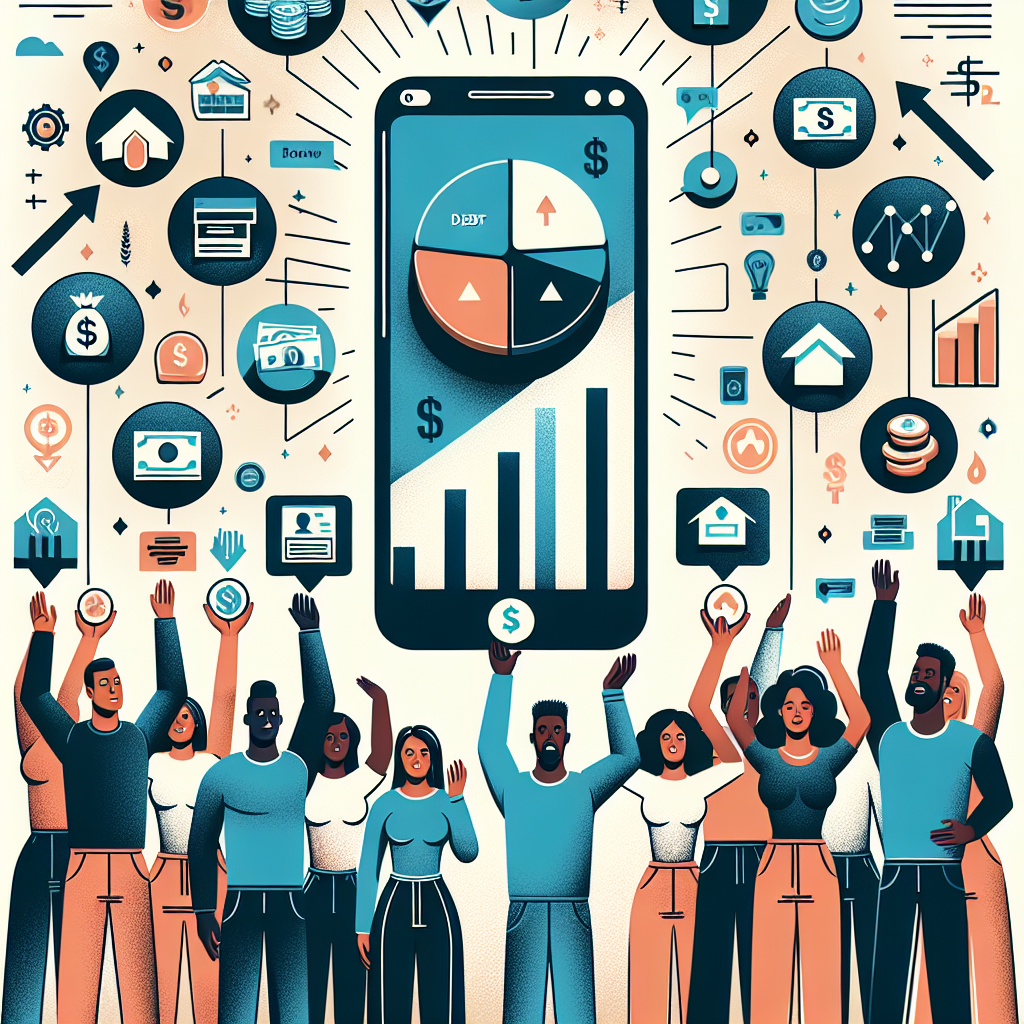Managing debt can be a daunting task, especially when it comes to consolidating multiple debts into a single, more manageable payment. Fortunately, there are several apps designed to help you streamline your debt consolidation efforts and regain control over your finances. This article will explore the best apps available today, providing you with the tools you need to tackle your debt head-on.
Understanding Debt Consolidation
Before delving into the best debt consolidation apps, it’s essential to understand what debt consolidation entails. Debt consolidation is the process of merging multiple debts into one loan, typically with a lower interest rate or more favorable terms. This can simplify payments, reduce monthly bills, and potentially save you money over time.
Top Debt Consolidation Apps
1. Debt Payoff Assistant
Overview: The Debt Payoff Assistant app helps users create a tailored plan for paying off their debts.
Features:
- Customizable Payment Plans: Users can input their debts and choose from different repayment methods like the avalanche or snowball methods.
- Progress Tracking: Monitor your progress visually, motivating you to stay on track.
- Payment Reminders: Get notified of due dates to avoid late payments.
Why It’s Great: The customizable features allow you to align your debt paydown strategy with your financial goals, helping you maintain focus and motivation.
2. Mint
Overview: Mint is a well-known personal finance tool that allows you to manage your entire financial life in one app.
Features:
- Budgeting Tools: Create budgets that factor in your debt payments.
- Expense Tracking: Monitor your spending to identify areas where you can cut back.
- Credit Score Monitoring: Keep an eye on your credit score and see how your debt management efforts impact it.
Why It’s Great: Mint’s comprehensive view of your finances helps you see the big picture while also focusing on your debt consolidation efforts.
3. You Need a Budget (YNAB)
Overview: YNAB is an award-winning budgeting app designed to help you give every dollar a job, making it ideal for debt management.
Features:
- Real-Time Tracking: Track your finances in real time to stay on top of your budget and expenses.
- Goal Setting: Set financial goals specifically for debt repayment.
- Educational Resources: Gain access to budgeting advice and debt management techniques.
Why It’s Great: YNAB promotes responsible spending and encourages users to prioritize debt repayment, making it a valuable tool for debt consolidation.
4. GoodBudget
Overview: GoodBudget is an envelope budgeting app that allows you to allocate funds to specific categories, including debt repayment.
Features:
- Virtual Envelope Budgeting: Break down your budget into envelopes to manage your debt payments.
- Multi-Device Synchronization: Access your budget from various devices, making it easy to track your finances on the go.
- Debt Tracking: Keep track of your existing debts and see how your payments are affecting them.
Why It’s Great: GoodBudget’s unique envelope system provides a visual representation of your finances, helping you stay organized and accountable.
5. Credit Karma
Overview: Beyond providing free credit scores, Credit Karma helps users understand their credit and offers personalized debt reduction advice.
Features:
- Credit Score Monitoring: Keep track of your score and understand what factors are affecting it.
- Debt Overview: See all of your debts in one place, making it easier to plan your consolidation strategy.
- Personalized Recommendations: Get suggestions for credit cards and loans that could aid in consolidation.
Why It’s Great: Credit Karma gives you insights into how your debts affect your credit score while providing tools to help improve your overall financial health.
Tips for Using Debt Consolidation Apps Effectively
1. Set Clear Goals
Before using any debt consolidation app, set clear financial goals. Whether it’s a timeline for paying off your debt or specific amounts you want to pay down each month, having defined objectives will guide your use of the app.
2. Be Consistent
Regularly update your financial information and track your progress. Consistent entries will give you a better picture of your financial situation and aid in more accurate planning.
3. Utilize Notifications
Take advantage of notifications and reminders from your chosen app. These prompts can help you stay on track with payments and budgeting.
4. Review Regularly
Financial landscapes change, so regularly review your progress and adjust your strategy as necessary. Most apps offer insights and reports that can guide your ongoing efforts.
5. Combine with Professional Advice
While apps are excellent tools, consider seeking professional financial advice if your debt situation is complex. Professional guidance can complement what you learn and track in these apps.
Conclusion
Debt consolidation doesn’t have to be overwhelming, especially with the right tools at your disposal. The apps mentioned in this article are some of the best available for managing your debt consolidation efforts. By identifying the right app for your needs and following best practices, you can take significant steps toward achieving financial stability and freedom from debt. Start today, and take control of your financial journey!

